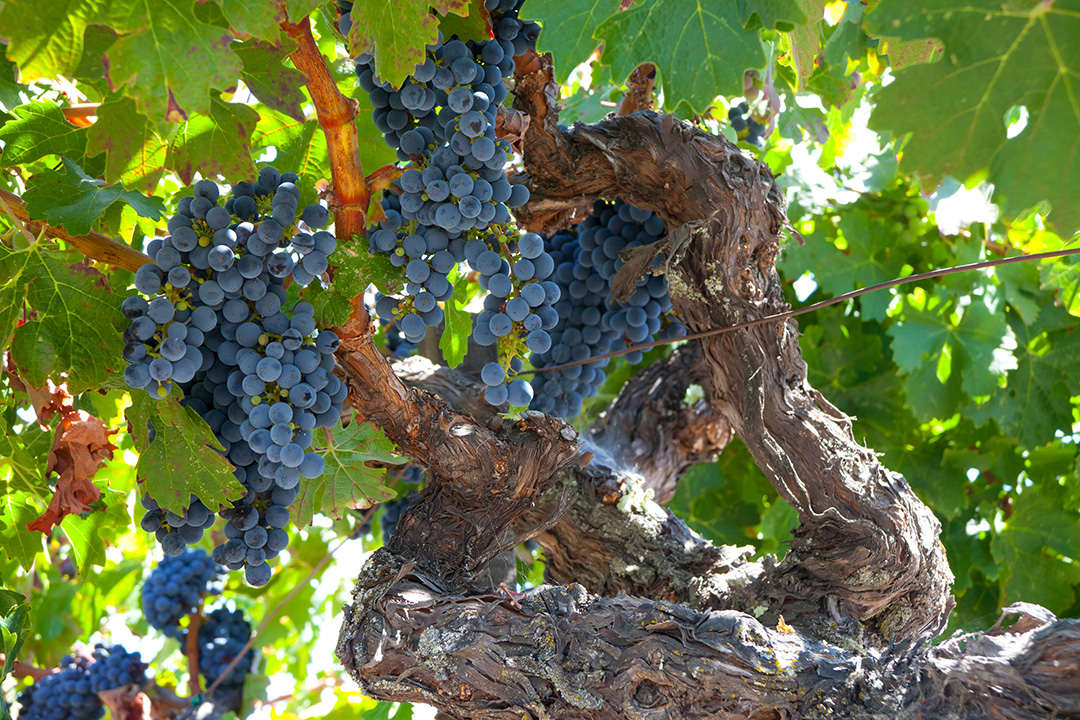Old Vine Zin – RIP

Writing for the Lodi Wine Association, Randy Caporoso expresses concern that old vine zinfandel could soon be a memory as farmers race to replant their vineyards with more profitable varieties. He provides a number of reasons for the replanting, such as low yields and labor shortages that make old vine vineyards costly to operate. But the bottom line is that the big wineries that dominate Lodi are slashing the price they are willing to pay for Zinfandel. And the reason is that high power ultra-ripe zinfandel isn’t selling like it used to.
American’s tastes are changing. Years ago, big, bold, and in your face wines were all the rage. Now, consumers are backing off, looking for balance, structure, and complexity – all features of ‘lighter’ wines. And, to be honest, the big and burly zinfandels are becoming more dessert-like. Gone are the herbs and spices that characterize the varietal, replaced by jammy raisins and prunes – hallmarks of extreme ripening.
There still are many who love the jammy zins, but they seem unwilling to pay more than $10 -$20 for a bottle. This means that wineries can’t afford to pay high prices for the fruit, leaving farmers no choice but to uproot and replant. And though some smaller wineries might be willing to pay more for the old-vine fruit, they often are prevented access to these vineyards because the vineyards are under long-term contract with the larger wineries.
I hate to see these old-growth vines removed, but am powerless to stop it. It is the unfortunate consequence of the consolidation of the wine industry into just a few major players. It is a consolidation made possible by a public willing to tolerate a lack of transparency in food and beverage production. It is a public willing to live with antiquated tied house rules and shipping and distribution laws that restrain trade and preserve and protect monopolies – laws that have outlived their original intent.
But if Lodi is losing its old vines, many Livermore vineyards are approaching ‘old vine’ status. Some of our local vineyards are now over 30 years old, an age when vines have settled in and become deeply rooted and adapted to their terroir. They may not be ancient yet, but they are senescent and beginning to produce the lower yields and intensity of flavor prized by winemakers.
I have many reasons to be optimistic about the future of Livermore’s aging vines. The vineyards and wineries remain independent, owned by passionate farmers and winemakers who live in our communities. Add to this our coastal climate and you have the formula for ripeness without jamminess. And because of all of this, winemakers are willing to pay the farmers a reasonable rate of return on their fruit.
Of course, you won’t find any Livermore Zins for $10. The best Livermore Zinfandels, those rated 90 points and higher, range between 30 – 50 dollars in the tasting room. But this is the price of authenticity and artisanship. It is the cost of preserving a winegrowing tradition.
If you are interested in exploring the highly rated Zinfandels from Livermore Valley, an excellent place to start is with our 2014 vintage – rated 92 points in Wine Enthusiast Magazine.


